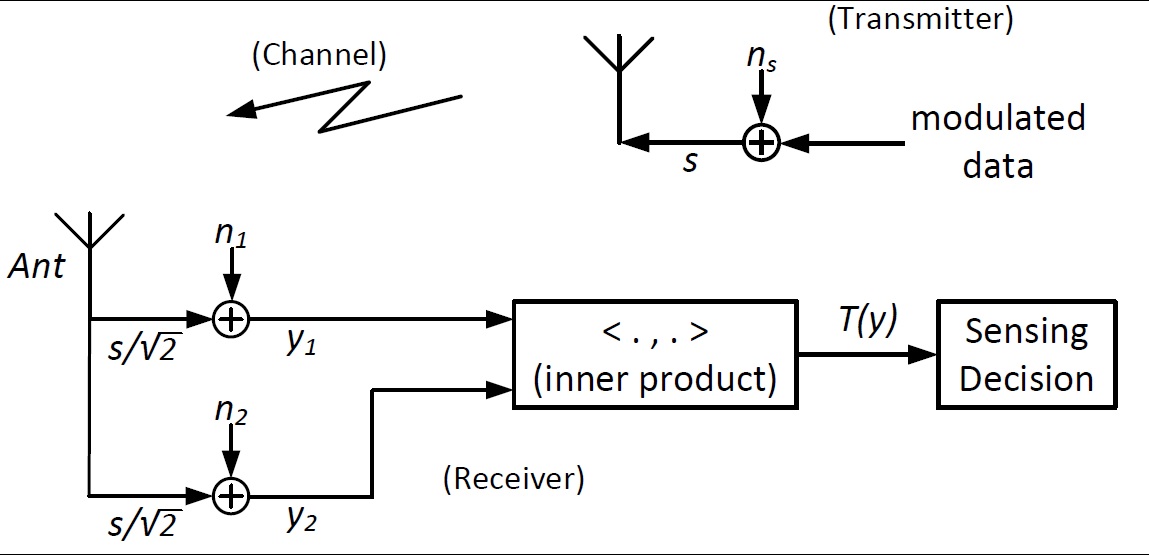HIPSS

At ReCognize, we proposed the HIPSS protocol — Hermitian-Inner-Product-based Spectrum Sensing — that is robust even in the presense of noise-like primary signal (or interference), uncertainty in noise power, and clock drift between primary and secondary users. HIPSS achieves these properties by realizing that noise, unlike interference, is dominated by imperfections at the receiver circuit. HIPSS splits the incoming signal in halves, each routed through independent receiver circuit and subjected to independent noise. HIPSS then makes a sensing decision by taking the Hermitian-inner-product of the two corrupted halves of the signal.
While HIPSS provides many benefits over other prior sensing techniques, HIPSS is still vulnerable to survey-tampering, where a misbehaving user can tamper with the prior knowledge obtained via surveying. We thus proposed a modification to HIPSS called D(elta)-HIPSS that enables the receiver to make a sensing decision without the necessary surveying phase. D-HIPSS achieves this by using the difference between the two signal halves to estimate the characteristics of the additive circuit noise.
We implemented HIPSS and D-HIPSS using Wireless open-Access Research Platform (WARP) software defined radios. Our findings have been accepted into INFOCOM 2013, and we have submitted an extended version to JSAC Cognitive Radio Series.
Related Publications:
Jerry T. Chiang and Yih-Chun Hu. Did You Also Hear That? Spectrum Sensing Using Hermitian Inner Product. Proceedings of the 32nd IEEE International Conference on Computer Communications (INFOCOM 2013). To appear.